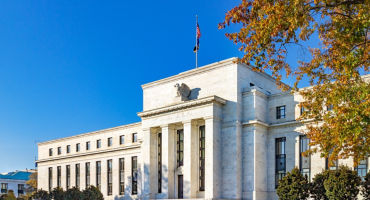- Investment Communications Manager
Skip to main content
- Funds
- Insights
- Capabilities
- About Us
- My Account
The views expressed are those of the authors at the time of writing. Other teams may hold different views and make different investment decisions. The value of your investment may become worth more or less than at the time of original investment. While any third-party data used is considered reliable, its accuracy is not guaranteed. For professional, institutional, or accredited investors only.
There is a growing consensus that Japan has reached several inflection points: the critical 150-per-dollar level for the yen — its lowest in more than three decades — and 10-year Japanese government bonds (JGBs) trading above their 25 basis-point (bp) yield-curve control (YCC) cap, along with limited signs of a meaningful fall in global (ex-Japan) inflation anytime soon. The underlying message is that many overseas investors now view a Bank of Japan (BoJ) policy shift from its ultra-accommodative stance as inevitable in order to stem the yen’s slide, especially after the Ministry of Finance’s (MoF’s) yen-buying intervention failed (unsurprisingly) to provide more than a temporary respite from the currency’s persistent weakness.
| Japanese investors’ view* | Global investors’ view | |
|---|---|---|
| US recession timing | 2Q23, induced by Fed hiking into “restrictive” territory | Gradual slowdown skewed toward 4Q23, supported by tight labor market |
| US Fed’s terminal rate | 4.75% – 5.00% | 5.25% – 5.50% |
| $JPY | MoF defends 150 handle-line; $JPY falls back to 130 on BoJ policy tweak(s) | $JPY goes to 160 if terminal US rate >5% with JPY weakness “sticky” (structural) |
| Japan inflation | “One-off” inflationary pressures, contained at around 3% and peaking in 2Q23 | Inflation likely to be problematic, following in the footsteps of US and Europe (where inflation was initially dismissed as “transitory”) |
| BoJ policy | Gradual, orderly fine-tuning of BoJ policy post Kuroda | 10-yr YCC won’t last until April 2023 (when Kuroda’s term is up) |
Sources: Wellington Management, Bloomberg. *Based on a Bloomberg survey of Japanese economists and conversations with Wellington Management’s Japanese client base.
Notably, domestic Japanese investors seem to have some distinctly different opinions than their global investor counterparts, with the former mostly in line with BoJ Governor Kuroda’s view around “one-off” inflationary pressures and no imminent need for a BoJ policy adjustment (Figure 1).
By way of comparison and context, consider the US, where the labor market remains very resilient. Recent policy rhetoric suggests that the US Federal Reserve (Fed) is rethinking its trend-growth estimates (i.e., significantly lower than previously thought), given the lack of increases in labor force supply and productivity. At present, the US economy appears to be further above trend than the Fed previously assumed, making even more policy tightening likely to be necessary to get inflation sustainably down toward the Fed’s 2% target. To that end, the Fed may be inclined to hold rates “higher for longer” and project a higher terminal federal funds rate, even if it signals a slower pace of rate hikes ahead.
As a result, we think the pressure on the BoJ to at least “tweak” its monetary policy strategy relatively soon will keep building. In the absence of such a change in policy, the yen will likely continue to depreciate going forward. On inflation, the consensus view right now is that putting in place heavy energy regulations/subsidies and food import controls would help to keep inflation in Japan lower versus its global peers. However, should the yen stay weak for an extended period of time, Japan’s inflation might prove stickier at higher levels, due in large part to imported inflation (whereby elevated prices for imported commodities cause a country’s overall inflation to rise).
Experts


Chart in Focus: Is the Fed rate cut positive for risk?
Continue readingThe Fed architecture under scrutiny: What are the investment implications?
Continue readingTwilight zone: how to interpret today’s uncertain macro picture
Continue readingStagflation watch: Thoughts on tariffs, inflation, and Fed policy
Continue readingURL References
Related Insights
Stay up to date with the latest market insights and our point of view.

FOMC: Easing into uncertainty
Fixed Income Portfolio Manager Jeremy Forster profiles the Fed's December rate cut, labor market trends, inflation pressures, and the role of anticipated changes to FOMC leaders in 2026.

Chart in Focus: Is the Fed rate cut positive for risk?
In this edition of Chart in Focus, we examine how the Fed’s long-awaited interest rate cut may influence risk assets.

The Fed architecture under scrutiny: What are the investment implications?
Macro Strategist Juhi Dhawan looks at how changes in the Federal Reserve's personnel and decision making could impact policy, the US dollar, and financial markets.

FOMC: Cushioning the US labor market
Fixed Income Portfolio Manager Jeremy Forster analyzes the Fed's decision to cut interest rates at the September FOMC meeting.

Twilight zone: how to interpret today’s uncertain macro picture
Macro Strategist John Butler and Investment Director Marco Giordano explore how to interpret today’s uncertain macroeconomic picture and its key implications.

Rethinking the Fed’s dual mandate
Is it time for a fresh perspective on the dual mandate? Fixed Income Portfolio Manager Brij Khurana explores the potential benefits of reorienting monetary policy toward maximizing productivity.

Stagflation watch: Thoughts on tariffs, inflation, and Fed policy
US Macro Strategist Juhi Dhawan considers signs the US economy may be moving toward a toxic mix of slowing growth and rising inflation, creating challenges for the Fed and investors.

Severance: The split between the economy and the markets
While markets have bounced back since Liberation Day, policy changes and macro data bear watching. Heading into the second half of 2025, we're focused on relative opportunities across asset classes created by disconnects and divides between markets and economies.

Oh baby, baby, it’s a wild world
Just one quarter into the year, many policy and economic assumptions have been turned on their head. What does it all mean for equity, bond, and commodity markets around the world? Members of our Investment Strategy & Solutions Group offer their outlook.

Fed delivers rate cut, but hawkish 2025 guidance sends yields up
Fixed Income Analyst Caroline Casavant examines the outcome of the December 18 Federal Open Market Committee meeting and the implications for rates, inflation, and real growth.

Going their separate ways: Capitalizing on bond divergence
Our fixed income experts discuss how to position portfolios for a world of uncertainty and divergence, exploring key themes and evolving bond opportunities for 2025.
URL References
Related Insights